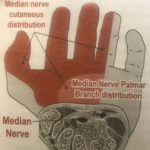
written by Laurie Melrose-Doering, Osteopath
Osteopath vs chiropractor – what you need to know.
Leading on from my blog contrasting osteopaths and physiotherapists, this article briefly compares osteopaths and chiropractors.
Although there is sometimes a friendly rivalry between osteopaths and chiropractors, the truth is that the two are extremely similar.
Osteopath vs Chiropractor education
The curriculum is very similar, with both osteopaths and chiropractors studying full-time for four years.
Chiropractors will be taught a larger number of different HVT techniques, while osteopaths usually learn cranial and visceral techniques. Unfortunately, however, some osteopathic schools are not very eclectic and no longer teach cranial techniques at undergraduate level.
Osteopath vs Chiropractor prevalence
There are around 5000 osteopaths in the UK and 3400 chiropractors in the UK.
Osteopath vs Chiropractor philosophy
Osteopaths and chiropractors are so similar because the founder of chiropractic, Daniel David Palmer, studied and developed some of his ideas under Andrew Taylor Still, the American medical doctor who founded osteopathy in 1872.
A. T. Still came up with the principles that most modern osteopaths follow:
1. structure and function are interrelated
2. the body has self-healing mechanisms
3. the body is a whole
4. treatment is based on this rationale
For example, a twisted ankle (altered structure) affects walking (altered function), while an altered gait (function) causes more stress on certain joints or muscles (altered structure).
Or, a weakness of the diaphragm due to, for instance, a rib injury (structure) affects breathing (function), while altered breathing has an impact on the diaphragm.
Or, overloading the liver with sucrose (altered function) will lead to non-alcoholic fatty liver (altered structure).
The goal is to trigger the body’s self-healing mechanisms by resolving restrictions (this blog by one of the early osteopaths goes into great detail), and thereby help the patient.
D. D. Palmer acknowledged A. T. Still’s relationship between structure and function, but placed more emphasis on the spine and corresponding nervous system. This is why chiropractors prioritize the spine, while osteopaths also concern themselves with the rest of the body.
Chiropractors use more spinal manipulations, called high velocity thrusts (HVT), that tend to elicit a ‘click’. Osteopaths have long adopted the use of HVTs, but their techniques differ slightly.
Cranial Osteopathy & Applied Kinesiology
In later years, other pioneers provided huge contributions to osteopathy and chiropractic care. An osteopath, William Garner Sutherland, developed Cranial Osteopathy, and a chiropractor, George Goodheart, founded Applied Kinesiology.
Again, some osteopaths and some chiropractors have adopted approaches developed by the other profession.
Ultimately, whether an osteopath also uses chiropractic techniques and approaches, or vice-versa, depends on whether they have committed to further post-graduate study and their own philosophy and preferences.
Osteopath vs Chiropractor treatment
The duration of a chiropractic appointment tends to be shorter because a chiropractor favours techniques that are quickly performed – HVTs are very quick techniques whereas predominantly osteopathic techniques such as articulations, and cranial, and visceral take more time.
As touched upon earlier, osteopaths use a slightly different technique when it comes to HVTs – they favour an HVT delivered by a levered thrust, while chiropractors use a more direct thrust on the spine.
So, should I be seen by an Osteopath or Chiropractor?
In a nutshell, osteopaths and chiropractors have the same goal. They just use a slightly different approach.
Although I am biased towards osteopathy, having been exposed to osteopathy more, I would say it is the practitioner that makes the difference.
Ideally, the practitioner has conducted further study, is open-minded, inspired by their profession, and committed to his or her patients.
I personally find Applied Kinesiology (AK) fascinating because it is a great diagnostic tool that helps the practitioner unscramble hidden dysfunctions, so a practitioner – osteo or chiropractor – who has undertaken further study to specialize in AK would get my vote.
To book an Osteopathy appointment in New Malden or in Marylebone, phone 020 8942 3148 or contact Aston Clinic London.
Aston Clinic London is a third-generation complementary health clinic based in New Malden and serves the local areas of Kingston, Wimbledon, Raynes Park, Surbiton, Chessington, Worcester Park, Sutton and other areas of southwest London and Surrey.
Aston Clinic London also offers Osteopathy and Herbal Medicine in Marylebone, Central London.

